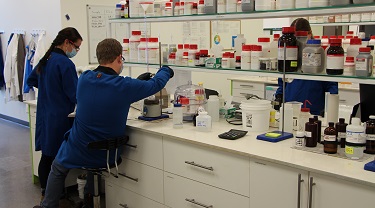COVID-19 has clobbered the global economy. Massive decline is imprinted in second-quarter gross domestic product (GDP) data everywhere. Analysts and news outlets alike can’t decide whether the numbers point to better or worse times ahead, which gives rise to a critical question: when economies falter, what brings them back up again?
The answer depends on the nature of the drop in activity. If it’s because of self-destructive policy, as in Zimbabwe, recovery typically requires drastic reform. However, if it’s because of the ups and downs of the business cycle, the process is usually more automatic. Here’s why: every economy has a unique trend growth path. Overdo things, and you get a bubble. This brings on a recession to clear the excesses, and eventually things resurface—primarily because of that long-term trend.
What about this time? Well, a deep contraction was caused not because it was time for a recession, but by a pandemic. How can we say that? Well, if it was time, then there should have been plain evidence of excesses across the economy. What we actually observe is the opposite. The economy wasn’t just balanced; we had significant evidence of pent-up demand. Yes, 10 years beyond the global financial crisis (GFC), we were still collectively struggling to get back to trend levels of activity.
Is there proof? Just look at housing markets in the world’s two “driver” economies. In the United States, housing barely got to the demographic-requirements level of 1.4 million units annually. Years of under-building have created a huge groundswell of demand for new units. Europe is the same. Moreover, this logic can be extended to the consumer and business investment sectors in both mega-economies.
Has COVID-19 killed this source of economic-re-booting firepower? Quite the contrary—it has actually added to it. How can this be? It might initially seem counter-intuitive, but it’s actually quite simple. The pandemic hasn’t thrown everybody out of work. And those who are still earning have much less to spend it on—no vacations, concerts, sports games, and fewer restaurant meals. Banking data show that personal accounts are swelling with extra “situational” savings that represent one of the greatest sources of post-pandemic staying power.
Fair enough, but what happens when governments everywhere turn off the stimulus spigots? Good question—but it gives rise to another: what have people and businesses done with their support funds? Uncertainty suggests that you spend as little as you can, and keep as much as possible aside until the storm blows over. And again, for spending above prime needs, there are less things to spend on.
Is there evidence, or is this just heartless theoretical heresy? Second-quarter savings rates tell a large part of the story. From a multi-year, post-GFC average of 7.5%, the U.S. savings rate leapt to as high as 34%, and currently still sits just shy of 20%. Canada’s equivalent skyrocketed from an average of 3.6% to 28% in the second quarter—far beyond projections, and ample evidence of cash-hoarding.
These three sources of pent-up spending are the best evidence that the economy has decent near-term staying power. Or at last the potential for it. Uncertainty has caused the spending freeze-up, and for a thaw to occur, consumers and businesses will have to become far more convinced that they are safe again. A vaccine would get us there speedily, but development and testing could take years. For the moment, solid containment policies with demonstrated effectiveness are our best near-term hope of returning to normal patterns of spending and general activity.
A final critical observation is that this is the average outlook. One key feature of our current predicament is that some are doing a lot better than average, others are far worse off than average, and then there are many somewhere in between. The hope is that a rising average performance will help all three cohorts.
The bottom line?
Has the economy lost its “boing”? Hardly—there’s lots of bounce in this one, but it’s being held back by COVID-19. Second-wave infections are preventing a continuation of the aggressive rebound we saw in May and June, but don’t be fooled by today’s slower numbers; they don’t represent fundamental weakness, but rather a hesitation to spend the mountain of extra cash socked away in the bank. If anything, this “second hesitation” is only piling up additional firepower. If so, it will eventually be unleashed.
This commentary is presented for informational purposes only. It’s not intended to be a comprehensive or detailed statement on any subject and no representations or warranties, express or implied, are made as to its accuracy, timeliness or completeness. Nothing in this commentary is intended to provide financial, legal, accounting or tax advice nor should it be relied upon. EDC nor the author is liable whatsoever for any loss or damage caused by, or resulting from, any use of or any inaccuracies, errors or omissions in the information provided.






